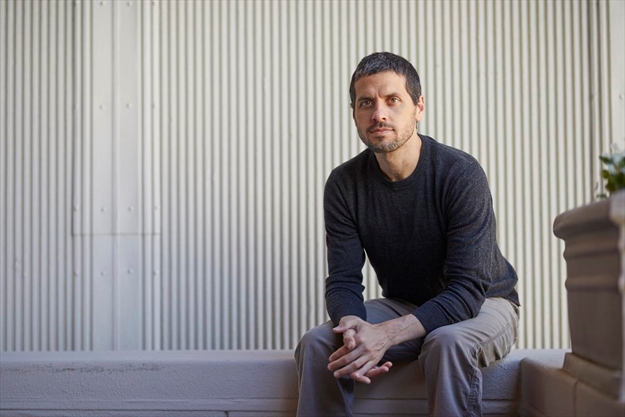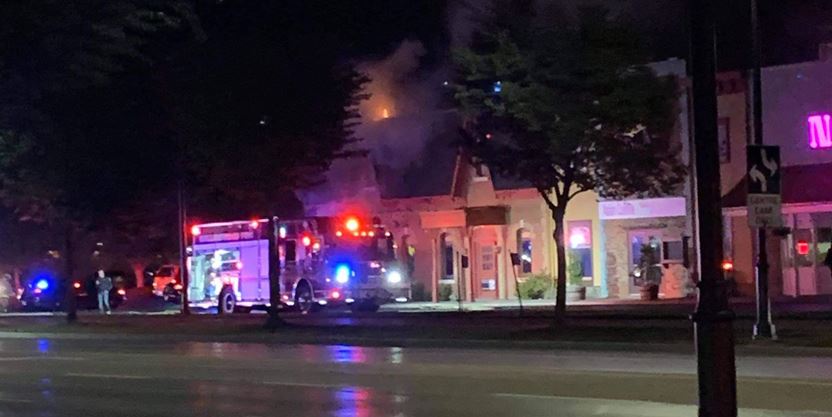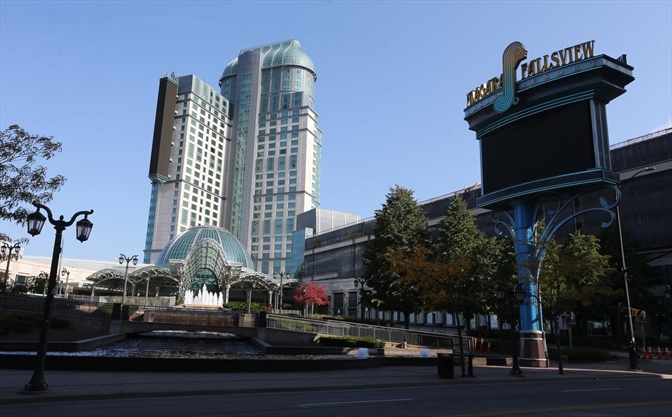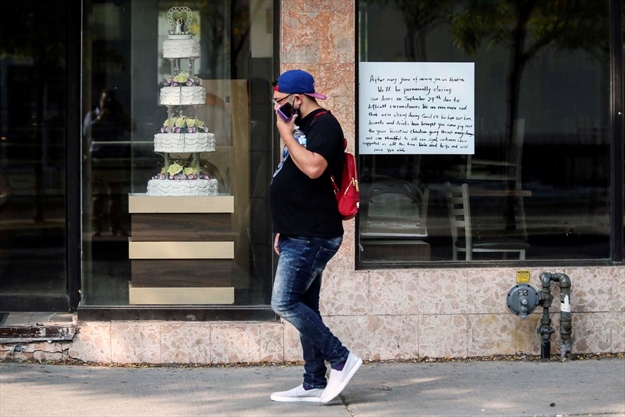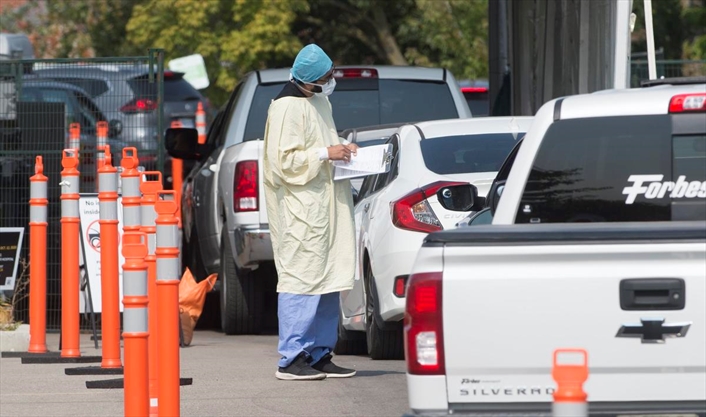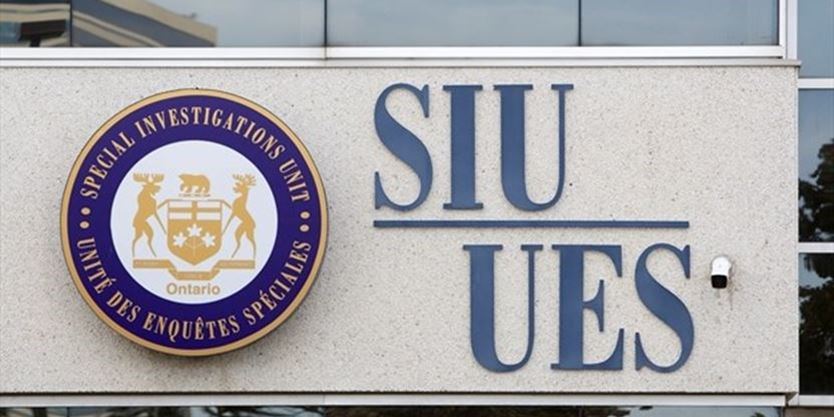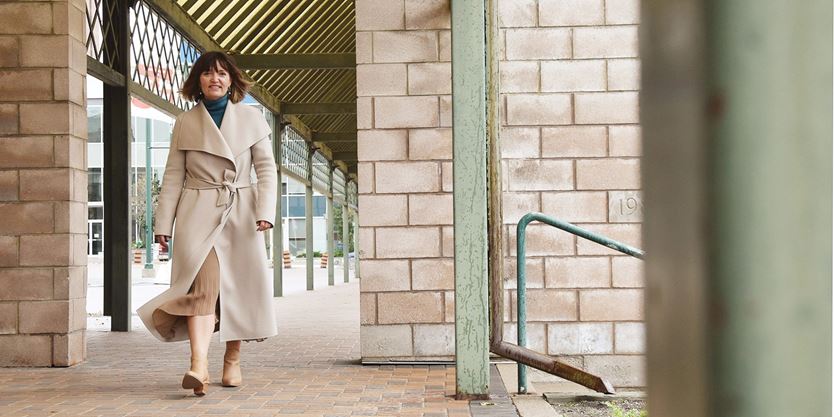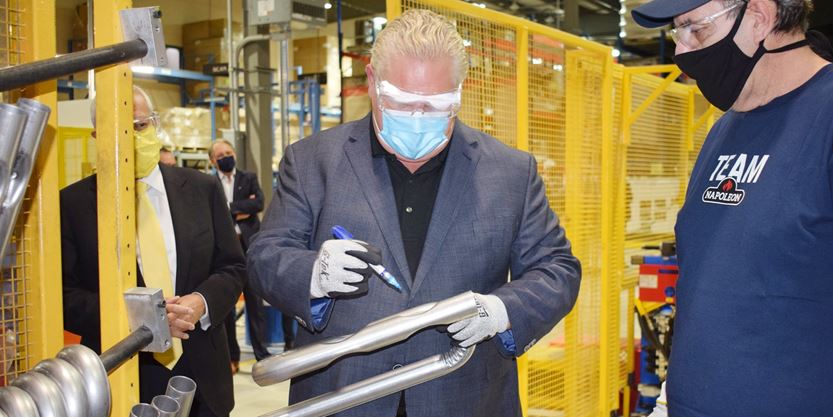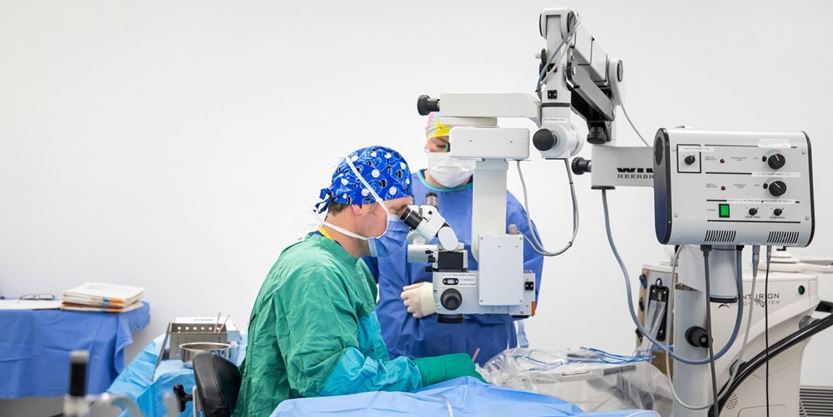The latest news from Canada and around the world Friday. This file will be updated throughout the day. Web links to longer stories if available.
6:29 p.m.: British Columbia has recorded 98 new cases of COVID-19, for a total of 8,641 infections.
A joint statement from the Health Ministry and the office of provincial health officer Dr. Bonnie Henry says one more person has died, for a death toll of 230 people since the start of the pandemic.

Sixty-two patients are in hospital, 19 of them in intensive care.
British Columbians are being urged step back from connecting in person to staying connected in other, safer ways as the cooler weather arrives
6:10 p.m.: Ontario’s regional health units are reporting another day with more than 500 new confirmed and probable COVID-19 cases, according to the Star’s latest count.
As of 5 p.m. Friday, the health units had reported another 515 cases in the last 24 hours, in line with a trend that has seen the rate of new infections grow at an accelerating pace since early August.
The province’s seven-day average for new cases is now at 430 new cases daily, slightly less than double what the health units were reporting 11 days ago on Sept. 14. Earlier this week, that average was growing slightly, on pace to double about every nine days.
Ontario last saw such rapid exponential growth before the pandemic’s first peak in the spring. Although Ontario is still well below that peak level — about 600 infections a day, reported in late April — the current rate of case growth, if sustained, would see the average eclipse that rate by early October.
Friday saw significant case totals reported across the province: Toronto reported 236 new cases, its most for any single day since mid-May; Peel Region reported 98; York Region added 44; Ottawa 41; Waterloo Region 18; Halton Region 19; Middlesex-London 14 and the Eastern Ontario Health Unit 10.
One new fatal case was reported, in York.
The province has now seen a total of 51,313 confirmed or probable cases of COVID-19, including 2,877 deaths.
The vast majority of the province’s COVID-19 patients have since recovered, and the recent rise in cases has not yet resulted in an equivalent jump in hospitalizations or deaths. That’s in part because the recent increase has not yet hit the vulnerable outbreak settings — like long-term-care homes — . Rates of hospitalization and death have also tended to lag behind weeks behind case jumps.
The province lists 3,899 active cases of the disease, a number that has been rising in recent weeks. (By the same calculation, Ontario saw hit a peak of 5,675 active cases in late-April.)
The Star’s count includes some patients reported as “probable” COVID-19 cases, meaning they have symptoms and contacts or travel history that indicate , but have not yet received a positive lab test.
The province cautions its separate data, published daily at 10:30 a.m., may be , saying that in the event of a discrepancy, “data reported by (the health units) should be considered the most up to date.”
5:15 p.m.: The minority Liberal government with the New Democrats over legislation to support workers during the COVID-19 pandemic, likely securing the support needed to remain in power.
“We are entering the second wave and millions of Canadians are still struggling to make ends meet,” government House leader Pablo Rodriguez said Friday on Twitter.
“We now have an agreement with the NDP on a bill that will deliver the help that Canadians need. It’s by working together that we will get through this pandemic.”
The Liberal throne speech introduced Wednesday needs the support of at least one of the major opposition parties for the minority government to survive a confidence vote, or else Canada could head into a federal election as parts of the country are already in a second wave of the COVID-19 pandemic.
NDP Leader Jagmeet Singh has spelled out the conditions for earning the support of his party: legislation assuring that Canadians left jobless due to the pandemic won’t have their emergency benefits cut and that Canadians who fall ill will get paid sick leave.
4:30 p.m. (updated): Toronto medical officer of health Dr. Eileen de Villa is ordering four businesses to close until they satisfy conditions spelled out under the Health Protection and Promotion Act.
The businesses are “hospitality” focused. One of the businesses was serving food, buffet style, which is a clear violation. Some businesses were also uncooperative with investigators.
De Villa said they became aware of staff working while ill and being pressured to work while sick. She said she can’t identify individual businesses right now because orders still being served.
“These are not actions I take lightly,” de Villa said.
Toronto Public Health tweeted out a graphic on how one night out in the city led to 20 cases and at least 80 people exposed to the virus who had to self-monitor, self-isolate and get tested.
4:15 p.m. (updated): There were 236 new infections in Toronto reported Friday, a daily jump big enough that it’s “a warning to the entire city,” medical officer of health Dr. Eileen de Villa told reporters.
Toronto Public Health has also declared an outbreak at Glen Park Public School, the first such declaration at a school in this city. Two students have been confirmed positive, which fits the definition of an outbreak.
The two students have been isolated to recover. One teacher and two class cohorts — one of 17 students and one of 18 students — have all been sent home to self-isolate and will stay home for 14 days. Parents have been notified in writing.
“Today’s news is expected,” de Villa says of school outbreak, adding that they expect more to be declared.
On Friday afternoon, a total of 39 public schools across Toronto reported infections among students or staff or both.
Neither the Toronto District School Board, with 29 affected schools, nor the Toronto Catholic District School Board, with the other 10, has closed any facilities.
The TDSB reported 20 infected infected students and 14 infected teachers.
The Catholic board eight infected students and three infected staff.
3:50 p.m.: The federal government ran a deficit of $148.6 billion during the first four months of its 2020-2021 fiscal year, the result of unprecedented spending in response to the COVID-19 pandemic.
The result compared with a deficit of $1.6 billion for the same period in the 2019-2020 fiscal year.
In its monthly fiscal monitor, the Finance Department says program expenses for the four-month period of April to July hit $215.7 billion, up $111.1 billion, or 106.2 per cent, from the same period a year earlier.
About $50.4 billion of the overall increase of $55.1 billion from the same period the year before was related to the Canada Emergency Response Benefit, which starts to expire this weekend.
3:45 p.m.: WestJet Airlines Ltd. is warning furloughed workers who receive the federal wage subsidy they will see their pay cut by up to 53 per cent starting Sunday.
The maximum weekly payment for more than 3,000 employees on furlough — a mandatory leave of absence — who rely on the Canada Emergency Wage Subsidy (CEWS) will drop to $400, down from $847, according to a WestJet memo sent out Wednesday.
Flight attendants called on the government to clarify when and how much money will arrive in company coffers via the federal subsidy in order determine whether wages can return to current levels.
“WestJet can’t float our wages until Ottawa fills in the blanks, so our members are seeing their cheques cut in half,“ said Chris Rauenbusch, who represents about 4,000 WestJet flight attendants — 2,500 are furloughed — with the Canadian Union of Public Employees.
Effective Sept. 27, the pay cut applies to all furloughed cabin crew and corporate employees. It was not clear whether WestJet’s 700 furloughed pilots are also affected.
3:30 p.m.: Manitoba’s chief provincial public health officer is making masks mandatory in indoor public spaces in Winnipeg, as cases of COVID-19 continue to surge in the capital city.
Dr. Brent Roussin said Friday there are 54 new cases of the virus in the province — 44 of them are in the Winnipeg health region.
In response, the city has been moved up to a code orange classification in the province’s pandemic response system.
Indoor and outdoor gatherings are also be restricted to 10 people.
The mask mandate comes into effect on Monday. Roussin said it will be in place for at least a month.
The restrictions will also apply to communities in the Winnipeg Metropolitan Region surrounding the city.
Earlier this week, the province’s top doctor said that in half of recent cases people had visited bars, pubs and restaurants.
Public health officials are consulting with the restaurant industry, Roussin said, and further restrictions could be coming.
For now, restaurants and bars can be open but people must wear a mask when they aren’t seated at a table eating or drinking.
There have been 1,764 COVID-19 cases in Manitoba and 487 are currently active. Thirteen people are in hospital and six are in intensive care. Nineteen people have died.
2 p.m. (updated): Ontario is making bars and restaurants shut down earlier and is closing all strip clubs in a bid to curb rising COVID-19 rates in the province.
The measures take effect Saturday, with bars and restaurants ordered to stop serving alcohol after 11 p.m. and to close by midnight except for takeout and delivery.
The province is also ordering all strip clubs to close.
Health Minister Christine Elliott said outbreak clusters in the establishments, particularly among people in the 20-39 age group who account for the majority of new infections, are driving the growth of COVID-19, along with private social gatherings.
The move comes after the province changed the rules surrounding social gatherings last week, lowering the number of people permitted at outdoor events to 25 and indoor events to 10.
Ontario reported 409 new cases of COVID-19 on Friday, and one new death related to the virus.
1:45 p.m. A court has ordered the Ontario government to restore health insurance coverage for residents who face medical emergencies while travelling outside of the country.
The by Premier Doug Ford’s government on Jan. 1, when the province stopped paying for emergency health care coverage for those who travelled abroad.
In a ruling released Wednesday, the Ontario Divisional Court said the province must reinstate the $200-to-$400-per-day coverage for emergency in-patient services and the as much to $50 per day for emergency outpatient and doctor services.
“The Canadian Snowbird Association is pleased with the court’s decision,” said Karen Huestis, president of the association that took the government to court.
“The ruling affirms the right of Ontario residents to out-of-country emergency insurance coverage, as required by the Canada Health Act.”
12:58 p.m. A group representing amusement fair operators is calling for government support, saying the COVID-19 pandemic has dealt a severe blow to its industry.
The Canadian Association of Amusement Operators says its members have lost nearly all of their projected revenue for the year as many annual fairs and carnivals have been cancelled.
The group says operators still have to deal with expenses such as insurance, rent and maintenance despite not being able to hold their events.
It says fairs offer cultural and economic value to communities, noting that individual amusement operators can employ between seven to 100 employees.
The group warns that without support, such events may not be able to return in the future.
It is asking both federal and provincial governments for support.
12:48 p.m. The federal Conservatives have been denied their request to have the House of Commons sit this weekend to debate new COVID-19 aid legislation.
Opposition House leader Gerard Deltell said earlier Friday the provisions in the bill demand detailed and urgent scrutiny.
Bill C-2 is scheduled for debate next Monday and Tuesday.
Deltell proposed that all of Sunday be devoted to studying it as well, in what’s known as a committee of the whole.
That format gives MPs a chance to grill the government without the more restrictive timelines that characterize regular debate.
But the Conservative motion in the House of Commons did not receive the unanimous consent it needed to pass Friday.
12:05 p.m. The federal government has signed a deal with AstraZeneca to get up to 20 million doses of its experimental vaccine for COVID-19.
At the same time Prime Minister Justin Trudeau says Canada is spending $440 million to join the COVID-19 Vaccine Global Access Facility, known as COVAX, as well as the COVAX market fund to help less wealthy countries buy access to vaccines as well.
Canada’s commitment under COVAX is split equally in half, with $220 million securing 15 million more doses of vaccines for Canadians, and $220 million to help low and middle-income nations buy doses.
The deal with AstraZeneca is the sixth such private pact with vaccine makers for Canada.
12:00 p.m. Health officials in New Brunswick are reporting a new case of COVID-19 today.
The new case is an individual between 30 and 39 years old in the Bathurst region.
Public Health says the case is related to travel from outside of the Atlantic bubble and the individual is self-isolating.
The number of confirmed cases in the province is now 200 while 191 people have recovered and there are seven active cases.
11:34 a.m. The federal Conservatives say they want the House of Commons to sit this weekend to debate new COVID-19 aid legislation.
Opposition House leader Gerard Deltell says the provisions in the bill demand detailed and urgent scrutiny.
Past COVID-19 legislation has passed fairly swiftly with all-party consent but at the time, Parliament was not sitting as normal.
Now it is, and Deltell is suggesting that putting the new bill through the ordinary legislative paces will take too long.
Among other things, Bill C-2 would create a new benefits regime to support those who have lost jobs due to the COVID-19 pandemic; the existing emergency response benefit is scheduled to end Saturday.
He wouldn’t say whether his party actually agrees or disagrees with those measures, only that Conservative MPs want to ensure they are fully scrutinized to make sure they are best for Canadians.
11:30 a.m.: A Queen’s University student who lives in residence has tested positive for COVID-19.
The Kingston, Ont., university says the student is self-isolating.
Close contacts of the individual will be contacted by public health officials as the case is investigated.
11:10 a.m.: Quebec has recorded 637 new cases of COVID-19, bringing the total number of cases in the province to 70,307, the provincial health ministry said on Friday.
While there were no deaths from COVID-19 recorded during the past 24 hours, four deaths between Sept. 13 and 23 are now believed to be from the disease, brining the total number of deaths in Quebec to 5,814.
11:03 a.m. The number of total active cases in publicly funded schools across Ontario has jumped to 238.
, the province reported 29 more school-related cases — 10 more students were infected for a total of 110; 10 more staff members for a total of 50 and 9 more individuals who weren’t identified for a total of 78.
There are 198 schools with an active case, which the province notes is 4.1 per cent of the 4,828 publicly funded schools.
11:03 a.m. Some Ontario pharmacies started offering COVID-19 tests on Friday as the province tries to ease the burden on busy assessment centres.
The appointment-only tests, however, can only be requested by certain asymptomatic individuals — and just who qualifies and how they can get the test was already causing some confusion.
One woman alerted to possible exposure by the COVID Alert app lined up to get a test before a Shoppers Drug Mart opened at 8 a.m. in downtown Toronto but learned she wasn’t eligible.
Laura Smith said she also didn’t realize pharmacy testing was by appointment only, and that she struggled to find information after getting the alert Thursday night.
“I didn’t see where to schedule so I came by,” said Smith, who said it was her first time trying to get tested.
“Now I know,” she said with a shrug, adding that she planned to head to an assessment centre to wait in line.
The pharmacy tests — available at up to 60 locations across Ontario — are being offered to select asymptomatic individuals, such as those with loved ones in long-term care homes, close contacts of a case or high-risk workers
10:43 a.m. In late May, as spring turned to summer, Premier Doug Ford told every Ontarian who wanted a test to go get one — even if they didn’t have symptoms. “Just show up,” he said.
This week, as summer turned to fall, that offer was revoked. Ontario asymptomatic people who arrive at assessment centres and have no exposure to a confirmed case or outbreak, with narrow exceptions, officials said Thursday.
Data from the province’s public health agency backs up the policy switch, demonstrating that this type of testing is of extremely low value, while carrying significant costs. Swabbing huge volumes of asymptomatic people burdens the system — contributing to the long lineups and lagging turnaround times that have plagued Ontario — and discovers few new cases.
Experts praised Thursday’s announcement, calling it overdue.
But they warned it could be challenging to communicate the change to the public — especially since Ford announced just Wednesday that 60 pharmacies would offer COVID testing, but only for asymptomatic people. Officials clarified Thursday that pharmacies would offer tests to those with confirmed exposures and other targeted groups.
10:30 a.m. The next Ontario election is supposed to be 615 days away, but the Progressive Conservatives will officially nominate the party’s 72 MPPs as candidates on Saturday, the Star has learned.
Senior Tory insiders, speaking confidentially in order to discuss internal deliberations, say they will also have standard-bearers in the other 52 Ontario ridings they do not hold by next March.
But the first priority is to ensure incumbents, who are not being challenged for their nominations, are ready to go.
That has triggered speculation at Queen’s Park that Premier Doug Ford may call an election before the scheduled June 2, 2022 vote.
10:18 a.m. (will be updated) Ontario is reporting another 409 cases of COVID-19. Locally, there are 204 new cases in Toronto with 66 in Peel and 40 in Ottawa. Sixty-five per cent of Friday’s’s cases are in people under the age of 40. More than 41,800 tests were completed.
9:46 a.m. Kingston Frontenac Lennox & Addington (KFL&A) Public Health has confirmed that they have successfully secured additional doses of the influenza vaccine for the region this year.
Medical Officer of Health Dr. Kieran Moore announced in June that Public Health had appealed to the province for more doses of the flu shot. He said that the region would need to “prepare for the worst” if the request didn’t come through.
Influenza typically causes a 10 to 15 per cent admission pattern in KFL&A area hospitals, Dr. Moore noted, as well as a 20 to 30 per cent increase in emergency department visits. COVID-19 and the flu also present similarly, particularly in adult patients, meaning a high flu prevalence could strain local COVID-19 testing capacity, as people try to distinguish the ailments.
By inoculating more people against influenza, Public Health hopes to reduce the overall strain it typically exerts on the health care system, and spare resources for managing COVID-19.
The Ontario government appears to be applying the same logic. On Tuesday, the province’s Health Minister Christine Elliot unveiled details of a fall pandemic response plan. The first of six “pillars” in the plan is aggressive flu vaccination.
“The Ontario government is implementing the largest flu immunization campaign in Ontario’s history,” the government announced. “The campaign is part of the province’s comprehensive plan to prepare the health system for a second wave of COVID-19.”
8:44 a.m. With only one week separating the end of one and the start of the other, the Tour de France and the French Open were shaping up as a double bill of sports entertainment, with masked but nevertheless live crowds, that would bear out President Emmanuel Macron’s arguments that the country can live with the coronavirus. The virus, however, had different ideas.
Whereas the three-week Tour reached Paris last Sunday having pulled off the coup of getting through the country’s worsening epidemic without any virus positives among its 176 riders, the French Open isn’t proving so lucky with its timing. Play is still scheduled to start Sunday, but organizers’ plans to have thousands of spectators there each day to cheer for Rafael Nadal, Serena Williams and others are being drastically scaled back as infections soar across France.
Last Sunday, tournament director Guy Forget had appeared in upbeat mood on French TV with the exhausted-looking Tour director, who tested positive himself during the race and hadn’t been sure it would get to Paris. Forget congratulated him for the cycling roadshow that drew smaller but still sizable and enthusiastic crowds, and looked forward to welcoming 5,000 spectators per day at Roland Garros. Although postponed from their usual slots in June and July both events decided not to cancel, unlike many others as the virus spread across the globe.
“Thanks to the Tour, thanks to tennis, sports are resuming again,” Forget said. “We want to experience beautiful emotions.
“If it’s 5,000 spectators, that’s better than nothing,” he added. “We see the glass half full.”
Less so now.
On Thursday, hours after the tennis tournament carried out a socially-distanced electronic draw, with no players present, France’s prime minister announced that new crowd-size limits introduced this week in Paris and other cities would also apply to Roland Garros. His office confirmed Friday that only 1,000 spectators will be allowed each day. Three weeks ago, the tournament had still been planning for 11,500, divided between its Philippe Chatrier, Suzanne Lenglen and Simonne Mathieu arenas. That was then cut last week to 5,000 and now to 1,000.
8:24 a.m. The Tokyo Olympic organizing committee and the International Olympic Committee agreed to cut costs by simplifying next year’s games in 52 areas, including staffing and events.
The number of staff and stakeholders will be reduced by 10-15 per cent, Tokyo 2020 President Yoshiro Mori said in a press conference Friday, following a two-day meeting with IOC executives on how to simplify the postponed games. Some events including opening ceremonies, as well as services such as food and transportation, will be scaled back.
“The opening ceremonies need to be inspirational, but not too festive,” Tokyo 2020 Chief Executive Officer Toshiro Muto said in the same briefing. “We are starting to modify the details.”
The local sponsors of the Tokyo games have yet to extend their contracts, which are set to expire in December, Muto said. The total amount that will be saved from the simplification has yet to be estimated, as has the limitation to the number of spectators, he said.
IOC member John Coates, who also joined the briefing via teleconference, said he isn’t concerned about the athletes’ qualification process as the federations are managing it well.
Originally scheduled for this summer, the event was postponed by a year in March due to the coronavirus pandemic that has killed almost 1 million people worldwide. Organizers had earlier said they were considering cost-cuts in more than 200 areas.
6:46 a.m. Tottenham received a bye Friday to advance to a League Cup meeting with Chelsea after its game against Leyton Orient was called off due to a coronavirus outbreak at the fourth-tier team.
Tottenham will now host Chelsea on Tuesday in the fourth round in a run of three home games in three different competitions across five days. Jose Mourinho’s side plays Newcastle in the Premier League on Sunday and Maccabi Haifa in Europa League qualifying on Thursday.
Orient’s League Two game on Saturday against Walsall has also been called off due to members of the squad having to self-isolate.
The east London club had hoped to rearrange the match against Tottenham after it was called off hours before Tuesday’s kickoff. League Cup organizers decided that it “was unable to fulfil its obligations to complete the fixture … and shall therefore forfeit the tie.”
6:18 a.m. Cyprus is ramping up coronavirus testing for soccer players and shutting down smaller stadium locker rooms following the emergence of large clusters of COVID-19 infections at two first division teams.
Officials from the health ministry and the Cypriot soccer federation have decided to carry out random coronavirus tests on five people from each of 20 teams from all divisions every week. Another 7,000 tests will be carried out on players from all divisions except the first division.
All stadium locker rooms smaller than a certain size will be closed and health officials will start inspections of all soccer stadiums and team installations to ensure health protocols are followed.
Any player who tests positive for COVID-19 is immediately placed in isolation under the existing protocols. Players who test negative within 24 hours of a confirmed case will be allowed to return to practice and take part in scheduled matches.
Cypriot clubs Nea Salamina and Ethnikos Achnas recently saw a spike in coronavirus infections.
5:54 a.m. Angry restaurant and bar owners are demonstrating in Marseille to challenge a French government order to close all public venues as of Saturday to battle resurgent virus infections.
The protesters, and local officials in France’s second-biggest city, are also threatening legal action, to try to block the order via the courts. They argue that Marseille’s virus case rise has been stabilizing, and that the central government in Paris is unfairly singling out Marseille for the toughest virus measures in the nation.
The government argues that hospitals in this Mediterranean city are under strain and the closures are the only way to stem the spread while avoiding new lockdowns. The French Caribbean island of Guadeloupe is under similar orders.
The central government also ordered less severe new restrictions for a dozen other cities, including Paris, where infections and hospitalizations are growing but the rate of infection per 100,000 people is lower than Marseille or Guadeloupe.
On Thursday France reported more than 16,000 new infections, and more than 10% of intensive care beds nationwide are now occupied by COVID-19 patients. France has reported 31,511 virus-related deaths, among the highest tolls in Europe.
4 a.m. Prime Minister Justin Trudeau will join Canada’s top public health officers Friday for their daily update on the worsening COVID-19 health crisis.
Trudeau is expected to have an announcement about his government’s ongoing efforts to protect Canadians and combat the potentially deadly novel coronavirus that causes COVID-19.
But he’s also expected to start joining chief public health officer Dr. Theresa Tam and her deputy, Howard Njoo, more regularly at their daily briefings — a sign of how serious the second wave of COVID-19 has already become.
During the first wave last spring, Trudeau held daily news conferences outside his home, Rideau Cottage, but those tailed off and finally stopped as the pandemic went into a bit of a lull over the summer.
The coronavirus is now back, with caseloads spiking dramatically in the four largest provinces over the past few weeks.
4 a.m. Some Ontario pharmacies will begin offering COVID-19 tests Friday as the province tries to ease the burden on busy assessment centres.
Up to 60 pharmacies are offering the appointment-only tests to certain asymptomatic individuals, such as those with loved ones in long-term care homes, close contacts of a case or high-risk workers.
Meanwhile, the government announced yesterday that the province’s assessment centres will now focus on testing those with symptoms, exposure to a case and people involved in outbreak investigations.
Premier Doug Ford had previously said anyone who wanted a test could get one at an assessment centre but changed that message yesterday.
That means some people with no symptoms who are simply seeking reassurance they don’t have the virus will not be able to access testing offered by the province.
Ford is also expected to announce another part of the province’s fall pandemic preparedness plan Friday.
4 a.m. Conservative Leader Erin O’Toole says he’s urging his MPs to be hypervigilant amid concerns they could bring COVID-19 from Ottawa back to their ridings.
But he won’t stop them from using the same private testing clinic he did after he was turned away from a public facility in Ottawa that was over capacity. “Well, what I’m actually going to do is try and get (Prime Minister Justin) Trudeau off his duff to get some tests so that people can do in their home like they can in most G7 countries,” O’Toole said in a telephone interview with The Canadian Press.
O’Toole is nearing his final days in isolation after testing positive for COVID-19 last week. He first sought testing at a public site last Wednesday, but after several hours in line, was turned away.
A call to the public health office for MPs directed him to a clinic and he went the next day without realizing it was a fully private establishment set up for MPs, he said.
He had thought he was going directly to the same kind of private laboratory used for medical testing by many Canadians.
“So should there be a special clinic where people get superior access? No,” he said.
Thursday 5:36 p.m.: Ontario’s regional health units are reporting the second consecutive day with slightly slower COVID-19 growth than recent days, according to the Star’s latest count.
As of 5 p.m. Thursday, the health units were reporting another 416 new confirmed or probable cases, slightly below a trend that has seen the rate of new infections grow at an accelerating pace since early August.
The province’s seven-day average for new cases is now at 414 new cases daily, slightly more than double what the health units were reporting 11 days ago on Sept. 13. Earlier this week, that average had been on a pace to double about every nine days.
Ontario last saw such rapid exponential growth before the pandemic’s first peak in the spring. Although Ontario is still well below that peak level — about 600 infections a day, reported in late April — the current rate of case growth, if sustained, would see the average eclipse that rate by early October.
Thursday saw significant case totals reported across the province: Toronto reported 191 new cases, it’s most since early June; Ottawa reported 82; York Region added 35; Waterloo Region 18; Durham Region 17 and Halton Region 16.
Peel Region meanwhile reported a relatively low 23 new cases, its lowest 24-hour total this month. (The health unit has averaged 79 cases a day over the last seven days)
The province has now seen a total of 50,810 confirmed or probable cases of COVID-19, including 2,876 deaths.
No new fatal cases were reported in the last 24 hours.
The vast majority of the province’s COVID-19 patients have since recovered, and the recent rise in cases has not yet resulted in an equivalent jump in hospitalizations or deaths. That’s in part because the recent increase has not yet hit the vulnerable outbreak settings — like long-term-care homes — . Rates of hospitalization and death have also tended to lag behind weeks behind case jumps.
The province lists 3,774 active cases of the disease, a number that has been rising in recent weeks.
The Star’s count includes some patients reported as “probable” COVID-19 cases, meaning they have symptoms and contacts or travel history that indicate , but have not yet received a positive lab test.
The province cautions its separate data, published daily at 10:30 a.m., may be , saying that in the event of a discrepancy, “data reported by (the health units) should be considered the most up to date.”
–


